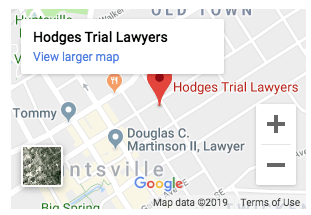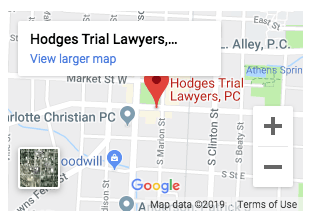Seeing a red-light accident occur is traumatizing—being directly involved in one can be life-changing. These accidents often happen at high speeds and give vehicle occupants little time to brace for impact or take evasive action. Unfortunately, in today’s busy society, trying to squeak through a yellow light is an increasingly common behavior.
If you or someone you love has been injured in a car accident, we’re here to help. Call Hodges Trial Lawyers at 256-826-4129 to set up a consultation now.
Running Red Lights is a Significant Cause of Accidents
The Insurance Institute for Highway Safety reports that red light running is a common and deadly driver behavior. In 2020 alone, over 900 people died as a result of red-light crashes. These accidents also led to approximately 116,000 injuries.
Although 85% of people report knowing that running a red light is extremely dangerous, over one-quarter of respondents had also run a red light in the previous 30 days. When you look at accident data from across the country, you’ll find that failing to heed traffic lights and signals is a very common cause of collisions.
How Red-Light Accidents Happen
Accidents at red lights happen in a variety of ways, each of which presents its own dangers. These include:
- Rushing to make a yellow light: Most of us are guilty of doing this at some point in our lives. We see the light turn yellow and hit the gas to make it through. In many cases, this works out just fine. But when you rush through a yellow light that’s about to turn red, you may enter the intersection on the red light and cause a collision. Oncoming traffic waiting to turn left or cars that go the moment the light turns green could hit you.
- Driving while distracted: Some of the most dangerous red-light accidents are caused by distracted drivers. If a driver is looking down at their phone while approaching a red light, they may not even notice that the light is red. This causes them to enter the intersection at full speed, possibly hitting cars that are legally in the intersection. It may also cause them to rear-end a car that is stopped at the intersection and push them into the intersection.
- Trying to stop after rushing to make it through a yellow light: This happens when someone hits the gas to try to make it through, only to realize that they just don’t have enough time. They slam on their brakes and slide partially into the intersection or spin out, causing a collision.
- Turns that occur after a light change: In most states, cars that enter the intersection on a yellow light have the right to complete that turn after the light turns red. When a driver turning left completes their turn after a light changes, they may be hit by a driver who enters the intersection as soon as the light turns green.
Protecting Yourself from Red Light Accidents
Although red light accidents are incredibly dangerous, states are making a lot of progress in this area. Research indicates that red light cameras are a very effective tool when it comes to reducing crash numbers and forcing people to drive more safely. The IIHS reports that communities with red-light cameras have lower levels of accidents and lower numbers of red-light runners.
You can also protect yourself simply by being wary of others’ actions and intentions. If you’re entering an intersection at a green light, don’t assume that the intersection will be clear. Check both ways to make sure that a distracted driver isn’t about to fly through the intersection and hit you. If you’re stopped at an intersection and you see someone coming up behind you way too fast to stop, try to scoot out of the way so they don’t push you into the intersection.
Seek Compensation with the Team at Hodges Trial Lawyers
After a red-light accident, talking to a lawyer should be a top priority. Call the team at Hodges Trial Lawyers to help you fight for compensation. Set up your consultation now by calling us at 256-826-4129 or reaching out to us online.



